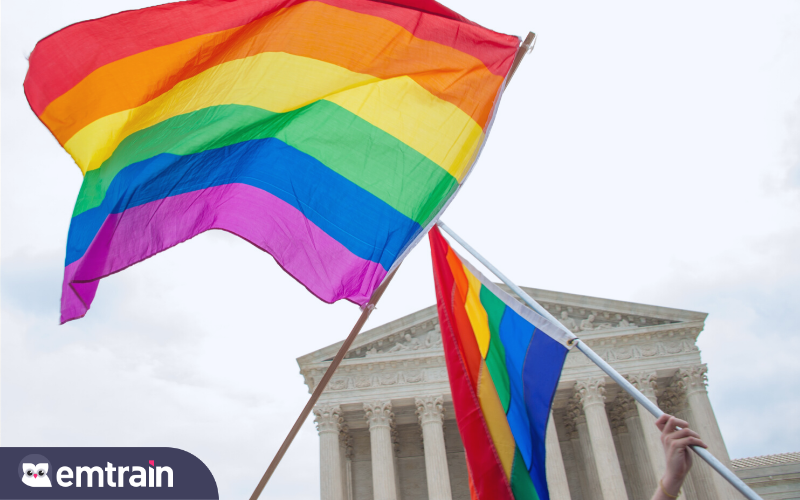In a landmark decision announced on Monday, June 17th, 2020, the United States Supreme Court announced that it is unlawful for individuals to be fired because of sexual orientation. The decision from the conservative Supreme Court came as a surprise to many, not to mention that the majority opinion was written by conservative leaning Justice Neil Gorsuch, President Trump’s first appointee. This 6-3 ruling in favor of LGBT workers’ rights has been long sought after by the queer community, and will change the work-life for LGBT people across the country.
Before now, it was legal for private LGBT employees to be fired because of their sexuality in 28 states. The new ruling expands the protections offered by Title VII of the 1964 Civil Rights Act, which prohibits workplace discrimination on the basis of race, religion, national origin and sex. The protections offered by Title VII and the inclusion of the word “sex” have long been debated.
The Logic Behind the Ruling
Essentially, Gorsuch wrote that, because an employer cannot fire a woman for being attracted to men, it is equally unlawful to fire a man for displaying the same characteristics. “An employer who fires an individual for being homosexual or transgender fires that person for traits or actions it would not have questioned in members of a different sex. Sex plays a necessary and undisguisable role in the decision, exactly what Title VII forbids,” wrote Justice Gorsuch. This was also the first Supreme Court ruling that explicitly laid out protections for trans people. Which is in sharp contrast with the executive branch’s recent attempts to roll back healthcare protections for transgender people.
While there is some debate over the accuracy of the Court’s statements about the linkages between sexuality and gender, the meaning behind the ruling stands, and this is truly a momentous occasion for the LGBT community, 50 years in the making. In 1953, President Eisenhower prohibited employment of gay and lesbian people by the federal government or federal contractors. A law that left scars on the country as it would not be overturned for another 23 years.
So what are the implications?
The main result of this decision is clear, members of the LGBT community cannot be fired for their sexuality. Many gay, lesbian, bisexual, and transgender folks across the country will be able to show up to work for the first time without fear of persecution, and with a newfound sense of confidence that they can be their most authentic selves at work.
In a statement made on Monday, James Esseks of the American Civil Liberties Union said: “The Supreme Court’s clarification that it’s unlawful to fire people because they’re LGBTQ is the result of decades of advocates fighting for our rights. The court has caught up to the majority of our country, which already knows that discriminating against LGBTQ people is both unfair and against the law.” There is a fear that this decision will erode religious freedoms in the US.
Though, as with any decision of this magnitude, there is much dissent. Religious conservative groups are wondering what this means for faith-based employers who chose not to employ members of the LGBT community and maintain their right to terminate said employees at will. Russell Moore, president of the Ethics & Religious Liberty Commission of the Southern Baptist Convention wrote “The ruling also will have seismic implications for religious liberty, setting off potentially years of lawsuits and court struggles, about what this means, for example, for religious organizations with religious convictions about the meaning of sex and sexuality.” The bulk of this discussion is centered around the employment protections for religious school teachers, employees of religious health-care providers, and social service workers employed by religious groups.
In response to such dissent, Justice Gorsuch commented that the Court is deeply concerned with maintaining religious freedom, “But worries about how Title VII may intersect with religious liberty are nothing new; they even predate the statute’s passage.” He also commented that “how these doctrines protecting religious liberty interact with Title VII are questions for future cases, too.” So essentially we’ll cross that bridge when we get there.
Nonetheless, LGBT rights groups and individuals across the country celebrate. Large crows could be seen celebrating outside of the Supreme Court Building in the days following the ruling. And the many, many queer and trans individuals who fought to make this freedom a reality are feeling rightfully vindicated.










